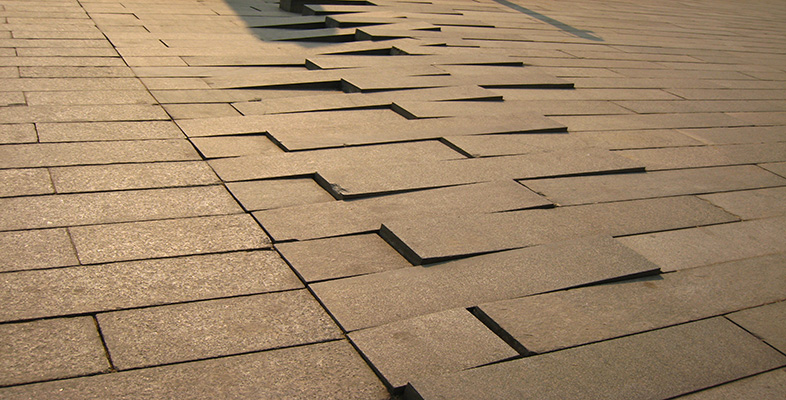3.7 Destructive plate boundaries, continued: continent-continent destructive boundaries
When two continental plates meet at a destructive boundary, the continents themselves collide. These types of continental collision are typically the result of an earlier phase of subduction of intervening oceanic lithosphere that has resulted in the closure of an ocean. Perhaps the best known and most spectacular example is the collision of peninsular India with Asia, which began 50 Ma ago, following the closure of an intervening ocean and produced the Himalayas and Tibetan Plateau . Even today, India continues to move northwards, indenting the southern edge of Asia at a rate of 40-50 mm y−1. Such collisions result in intense deformation at the edges of the colliding plates, and those sea-floor sediments that were not subducted become folded and compressed into immense mountain chains or orogenic belts. Active mountain belts, such as the Alps and Himalayas in Eurasia, and the Rocky Mountains in the USA and Canada, are generally much wider than mountain belts associated with Andean-style arc systems, with deformation belts occurring many hundreds of kilometres into continental interiors.
Question 15
What does this observation suggest about the strength of continental lithosphere relative to oceanic lithosphere?
Answer
It suggests that the continents are less strong and less rigid than oceanic lithosphere.
The continents are made up of less-dense rock than oceanic lithosphere and are dominated by quartz and feldspars. At elevated temperatures, these minerals are much weaker than the olivine and pyroxene characteristic of the oceanic crust and mantle. Moreover, continental crust contains a higher concentration of the heat-producing elements K, U and Th. The overall higher heat production conspires with the dominance of weaker minerals to make the continental crust much less rigid than the crust beneath the oceans and, therefore, easier to deform. During deformation the continental crust is thickened and this gives rise to the dramatic topography of active mountain ranges. However, once the forces that drive collision are removed, erosion takes over and the high topography is reduced to more modest elevations. Older mountain belts, such as the Appalachian and Caledonian orogenic belts, which are the products of continental collisions that occurred hundreds of millions of years ago, are now supported by a balance between isostatic support of their thickened crustal roots and erosion that is controlled by climate.
